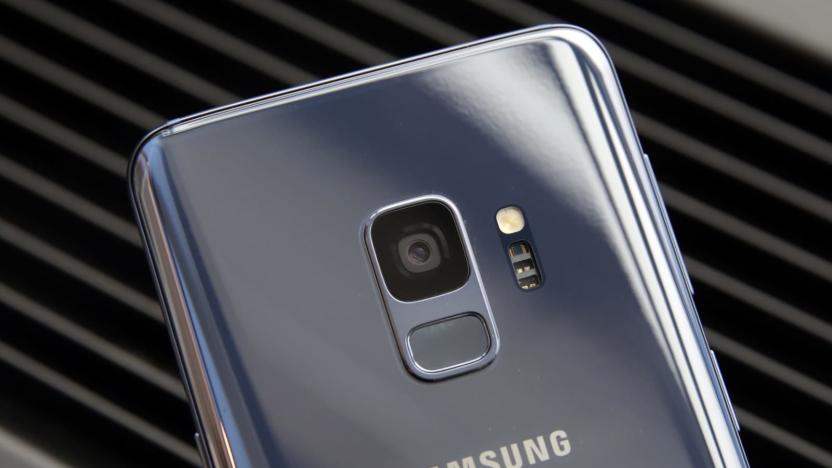LowLightPhotography
Latest

Samsung may be working on a low-light camera mode called Bright Night
Samsung might be working on a new night photography mode to take on similar features in rival phones. According to a report from XDA-Developers, code the most recent build of Android Pie for the Samsung Galaxy Note 9 hints at the company working on a feature called Bright Night. According to the code, it will allow users to "take bright pictures even in very dark conditions."

Engadget visits Nokia House wrap-up: Stephen Elop Q&A, Lumia 920 camera tests and more
It's been a whirlwind week of all things Nokia for our Engadget crew here in Helsinki, Finland. With a (nearly) all access pass to the company's glass House in Espoo, we brought you a very candid, very live Q&A with CEO Stephen Elop -- recorded for posterity with the Lumia 920 -- as well as in-depth proofs of that handset's game-changing rear camera module. From side-by-side low light comparison shots with other leading smartphones to optical image stabilization tests and even a peek behind the Finnish outfit's R&D practices, we've got it all. So, if you haven't had time to catch up with this flurry of pre-launch news from behind the blue velvet rope, now's your chance. Just click on past the break for the full recap.

Nikon D800 studio samples posted at DPReview (update: 5D Mark III studio sample added)
Nikon faced some backlash following the announcement of its D800 DSLR, due both to the camera's potentially excessive 36.3-megapixel resolution and its relatively limited top sensitivity of ISO 25,600. Then, less than one month later, Canon revealed its own mid-range full-frame cam -- the 5D Mark III -- with a 22.3-megapixel sensor, and an option to shoot at ISO 102,400. Both models appeal to the same market of professional photographers, but with vastly different specs, which is the better pick? Low-light shooters will likely base part of that decision on high-ISO capabilities, and after reviewing samples from both cameras, there appears to be a winner.DPReview spent some time with the D800, and we took the Canon for a spin last week. We scaled the D800 sample down to 22.3 megapixels to match the 5D, then pasted a 300-by-400 1:1 pixel section from each camera side-by-side in the image above. The D800 JPEG (on the left) appears to be the noisier of the two, which seems logical, considering that Nikon opted to boost the camera's resolution instead of its sensitivity. Still, the cam's top-ISO is quite usable, and if you plan to shoot in a studio setting or can live without a six-digit sensitivity, the D800 will likely suit you just fine. Hit up our source link for samples shot at the full ISO range, including full-res downloads, to make that call for yourself.Update: We've replaced the Canon sample with a studio shot from DPReview, which provides a more accurate comparison. You can find images from both cameras at our source links below.

Canon's 8-inch CMOS sensor can record SPACE at 60fps
For whatever reason, Canon seemed more concerned with showing off its engineering prowess than finding a use for the giant 8-inch CMOS sensor it created last year. Fortunately, the super-powerful snapper has found its way into the 105-centimeter Schmidt Telescope at the University of Tokyo's Kiso Observatory. The sensor's size makes it a perfect fit to record in low-light; capturing the wonders of the universe in 0.3 lux at 60 fps. The University will premiere footage from the experiment, possibly with nibbles, after September 19th -- presumably in a theater with a blanket ban on people muttering the introduction to Star Trek as it plays.

AIST shows off full-color night vision camera, well lit Bullwinkle figurine (video)
You might know them for seemingly ridiculous innovations like Segway shoes or the HRP-4C pop star robot, but the folks at AIST have put away the gimmicks for their latest invention -- a full-color night vision camera. Produced by Nanolux, an arm of AIST, the camera uses a series of algorithms to read and process wavelengths reflected by objects lit with infrareds, allowing it to successfully reproduce reds, blues, and greens in the darkest of conditions. The company hopes to make the device available by the end of 2011 at a price point lower than conventional night vision cameras, and says they will work with different lenses to improve long-range photography for the device. Such an invention could have serious implications for fields like surveillance and wildlife observation, but fear not, AIST hasn't lost its sense of humor -- the company used a Bullwinkle figurine rotating on a Lazy Susan to demo its latest invention at Printable Electronics 2011. Check out the video after the jump.




